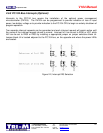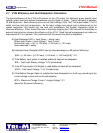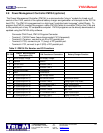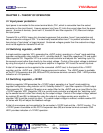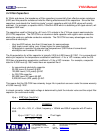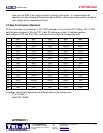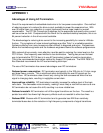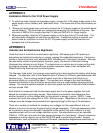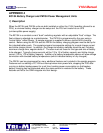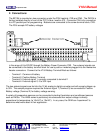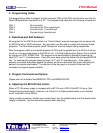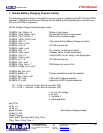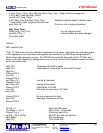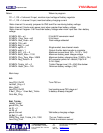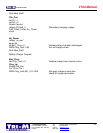
12 September 2006 V104 Manual
Tri-M Engineering Tel: 800.665.5600, 604.945.9565
1407 Kebet Way, Unit 100 Fax: 604.945.9566
Port Coquitlam, BC V3C 6L3 E-mail: info@tri-m.com
Canada Web site: www.tri-m.com
20
automotive applications. Some devices provide “zener diode” style protection, while others
provide “back to back zener diode” bidirectional protection. Each type has advantages, but unless
they are used correctly, they will fail to protect the electronics. Ratings on the transient
suppressors can be confusing. A suppressor with an avalanche voltage of 24V to 32V will have a
clamp off voltage of over 40V. In addition, ambient temperature can vary from –40C to 70C and
can result in the avalanche voltage being several volts lower at –40C and a clampoff several volts
higher at 70C.
Not all vehicles have 12V battery systems. Some trucks use 24V batteries, aircraft use 28V and
trains from 45V to 85V. Transient suppressors for aircraft cannot use the 12V system automotive
components. Instead, a suppressor with an avalanche rating of 35V is needed to allow for low
ambient temperature compensation, but this results in clamp off of over 70V. Tri-M Engineering’s
V104 Vehicle Power Supply, employs a Diode Inc. (part#5KP33A), allowing an input voltage range
of 8V to 30V. If a high clamp off voltage cannot be tolerated, other techniques must be used. A
series device such as a MOSFET can act as a pre-regulator, but it also must be selected to
withstand transients. In addition a series device adds to in-efficiency and creates a heat
dissipation problem, especially at high ambient temperatures.
“Load dumps” occur infrequently in a vehicle’s lifetime, but any electronics wishing to survive in
this environment must be designed to withstand the assaults. “Load dumps” co-operate slightly
through, their worst-case voltage does not typically occur with worst-case source impedance. In
fact, although the total energy of a “load dump” may be 500 joules, a transient suppressor capable
of 70 joules typically will be adequate because of the distributed electronics in the vehicles. That
is, provided the suppressor ratings are the same or larger than other suppressors throughout the
vehicle. A quick thinking engineer can take advantage of this and design his power supply to
withstand higher voltages and thus let others’ transient suppressors do the work.



